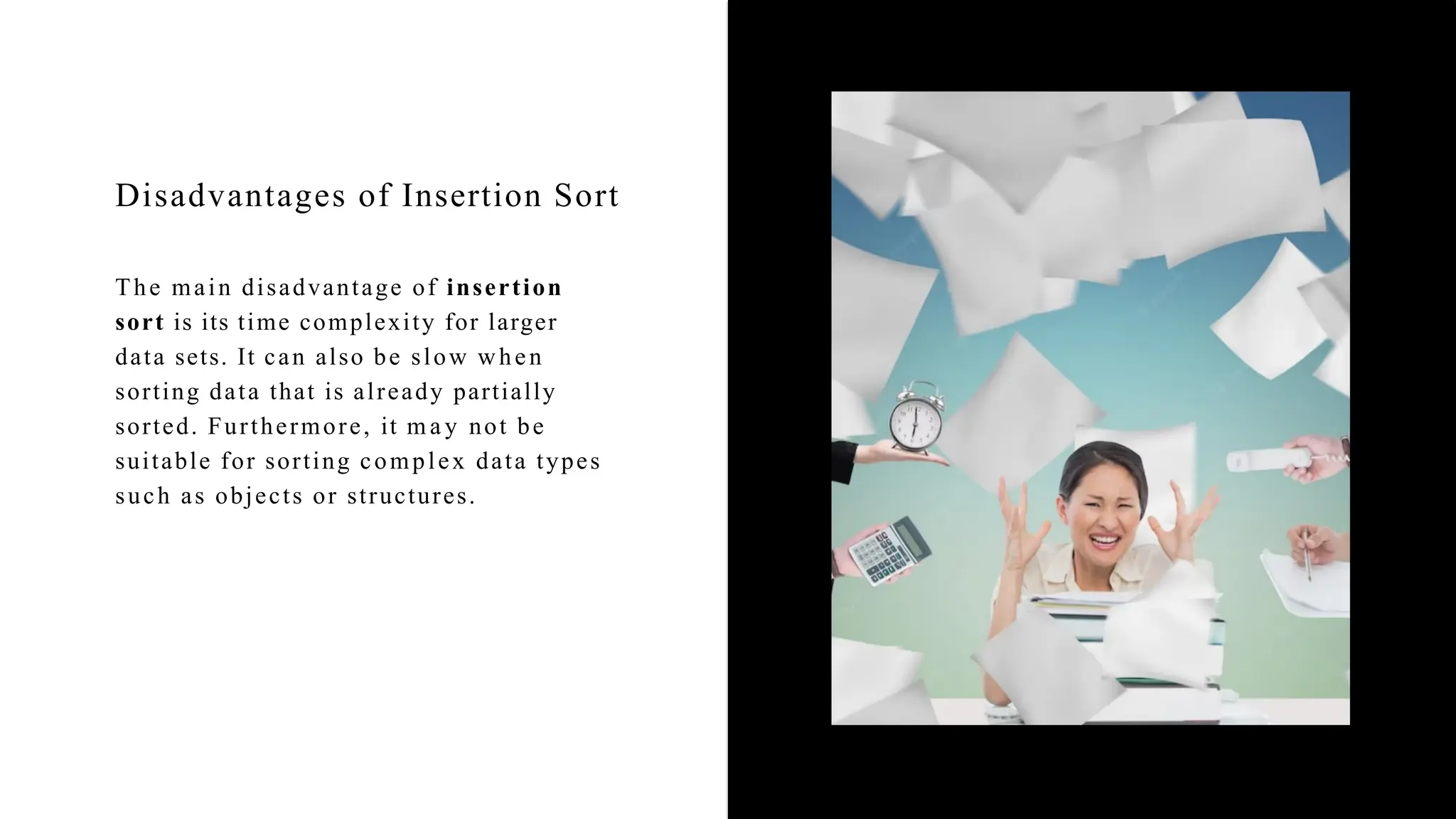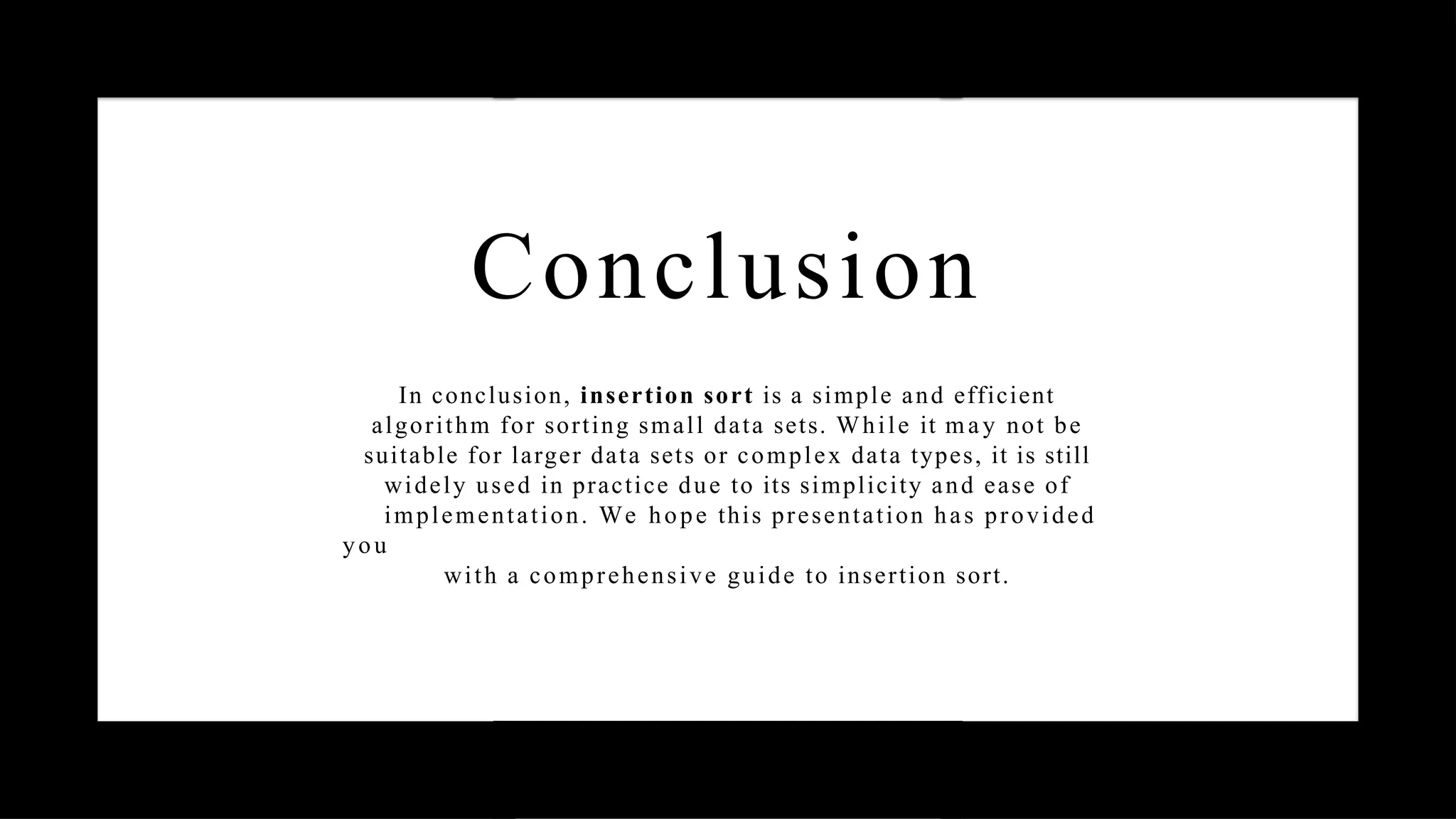This document introduces the insertion sort algorithm, explaining its mechanism of sorting an array by repeatedly shifting elements to their correct positions. It highlights the algorithm's efficiency for small data sets despite its O(n^2) time complexity, making it less suitable for larger datasets. The document concludes by affirming the advantages of insertion sort, such as its in-place, stable sorting nature, while acknowledging its limitations, especially with larger or complex data types.
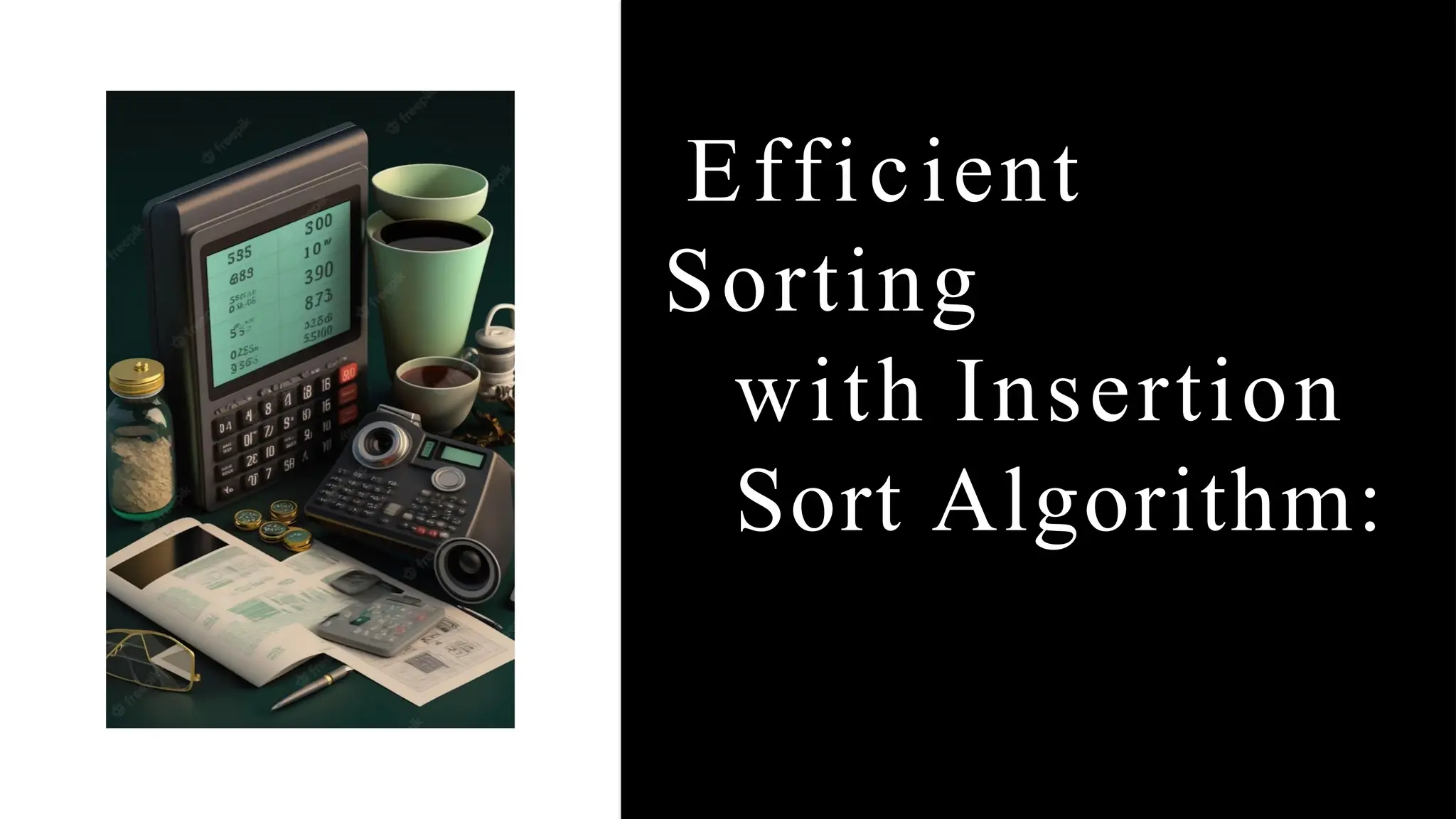
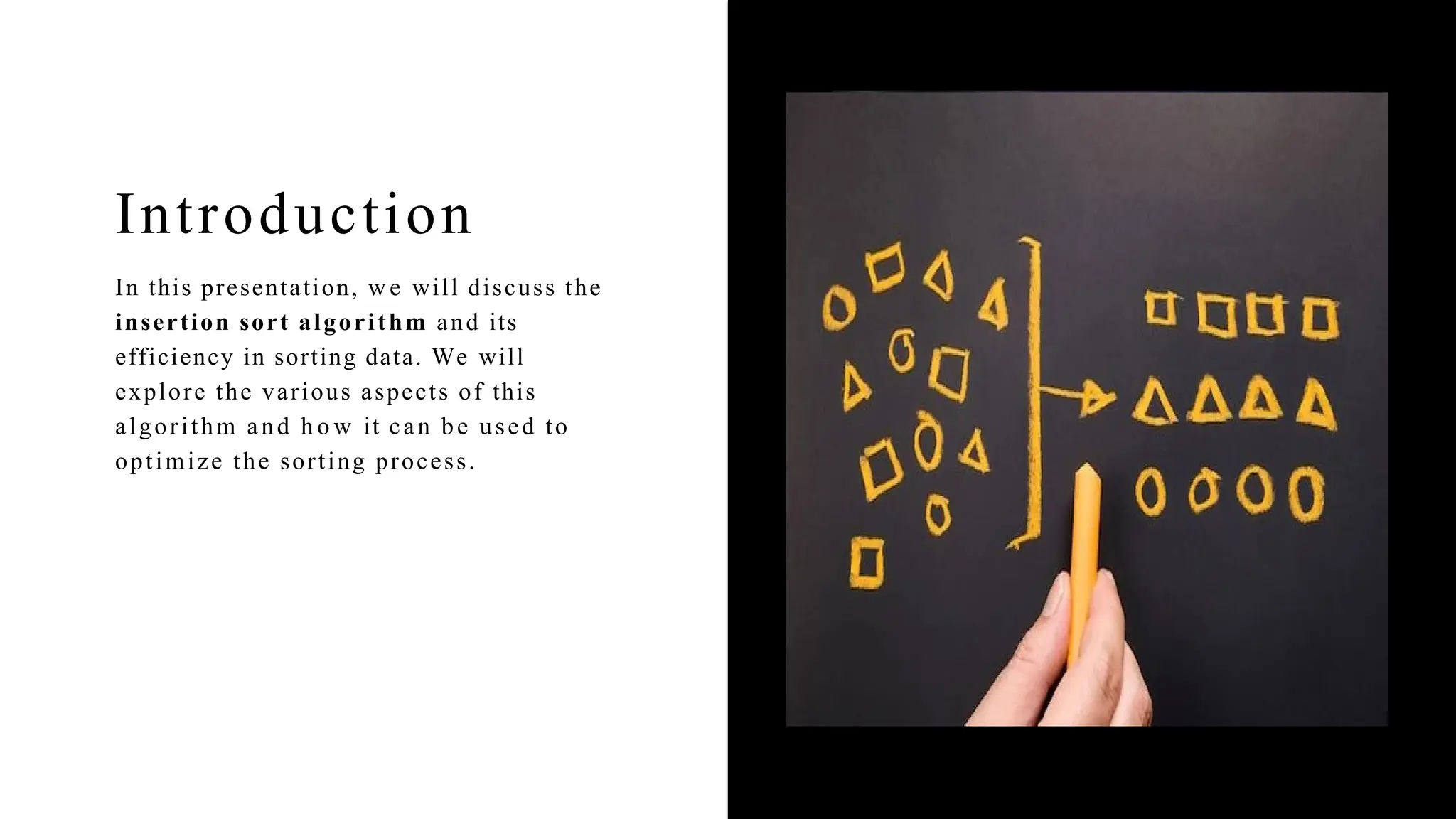
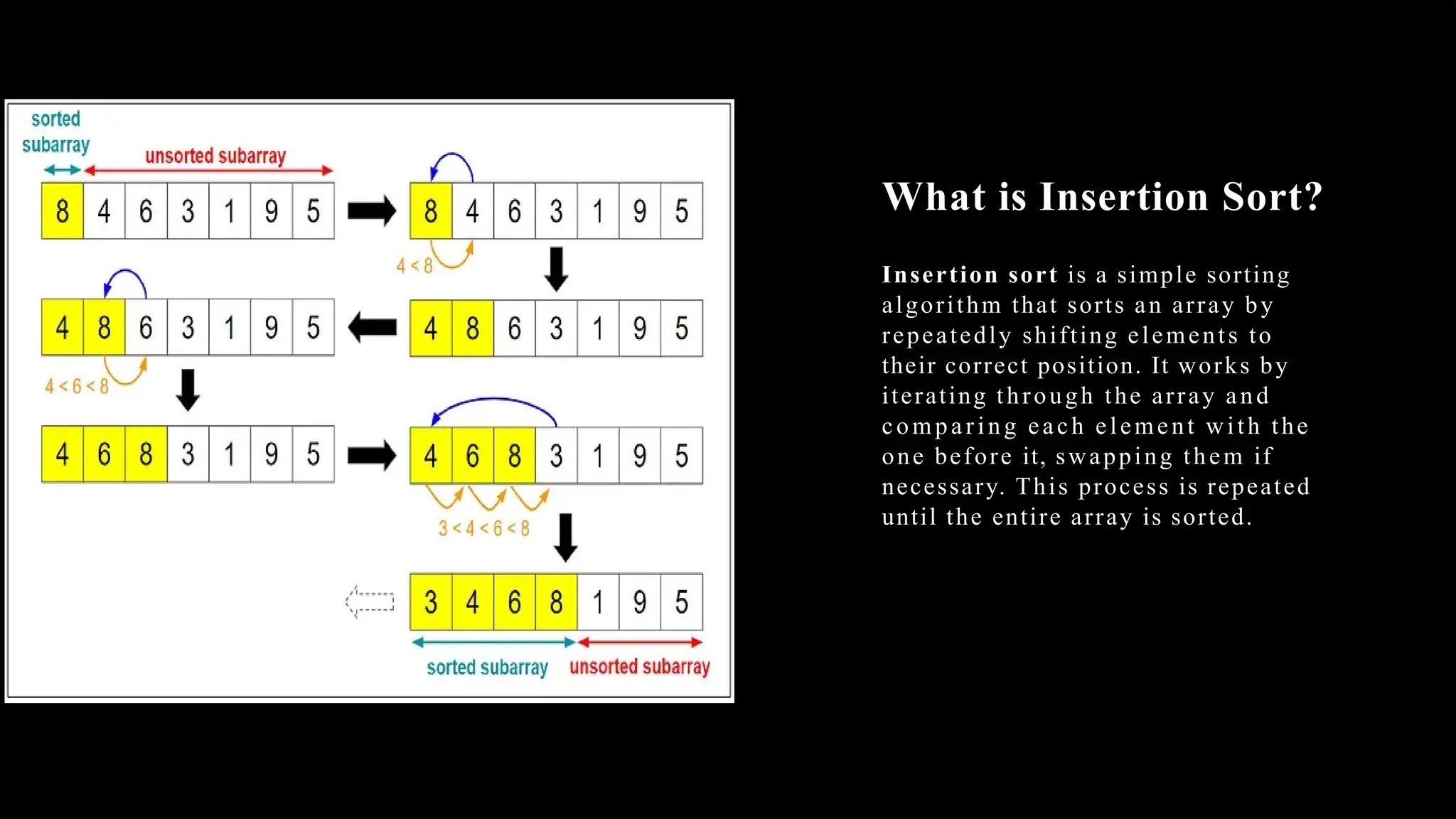
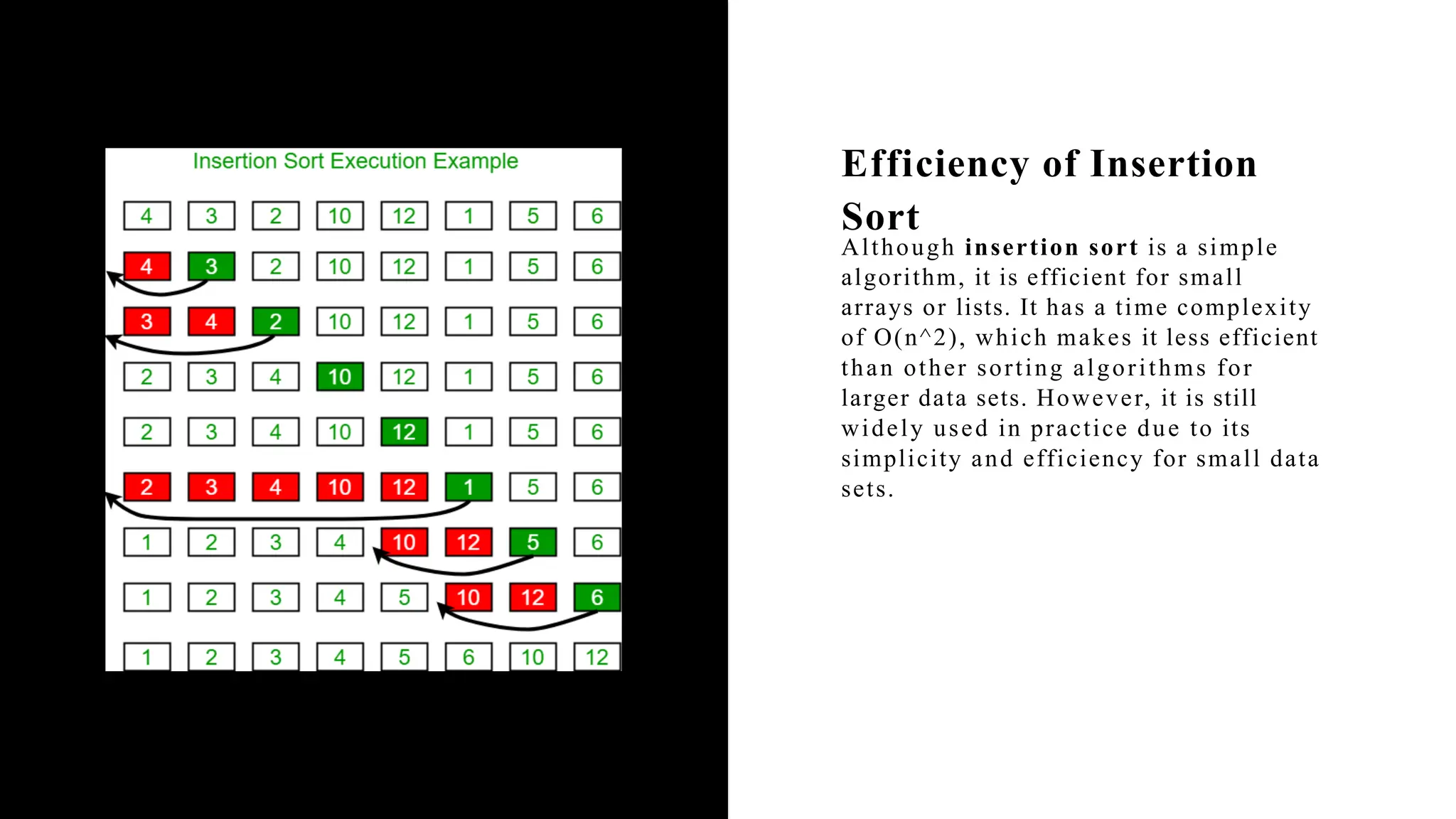
![Algorithm
void insertionSort(int arr[], int size) {
for (int i = 1; i < size; i++) {
int key = arr[i];
int j = i - 1;
// Move elements of arr[0..i-1]
that are greater than key to one
position ahead of their current
position
while (j >= 0 && arr[j] > key) {
arr[j + 1] = arr[j];
j--;
}
arr[j + 1] = key;
}
}](https://image.slidesharecdn.com/insertionsort-241112052017-bc2ff167/75/introduction-to-insertion-Sorting-algorithm-5-2048.jpg)

